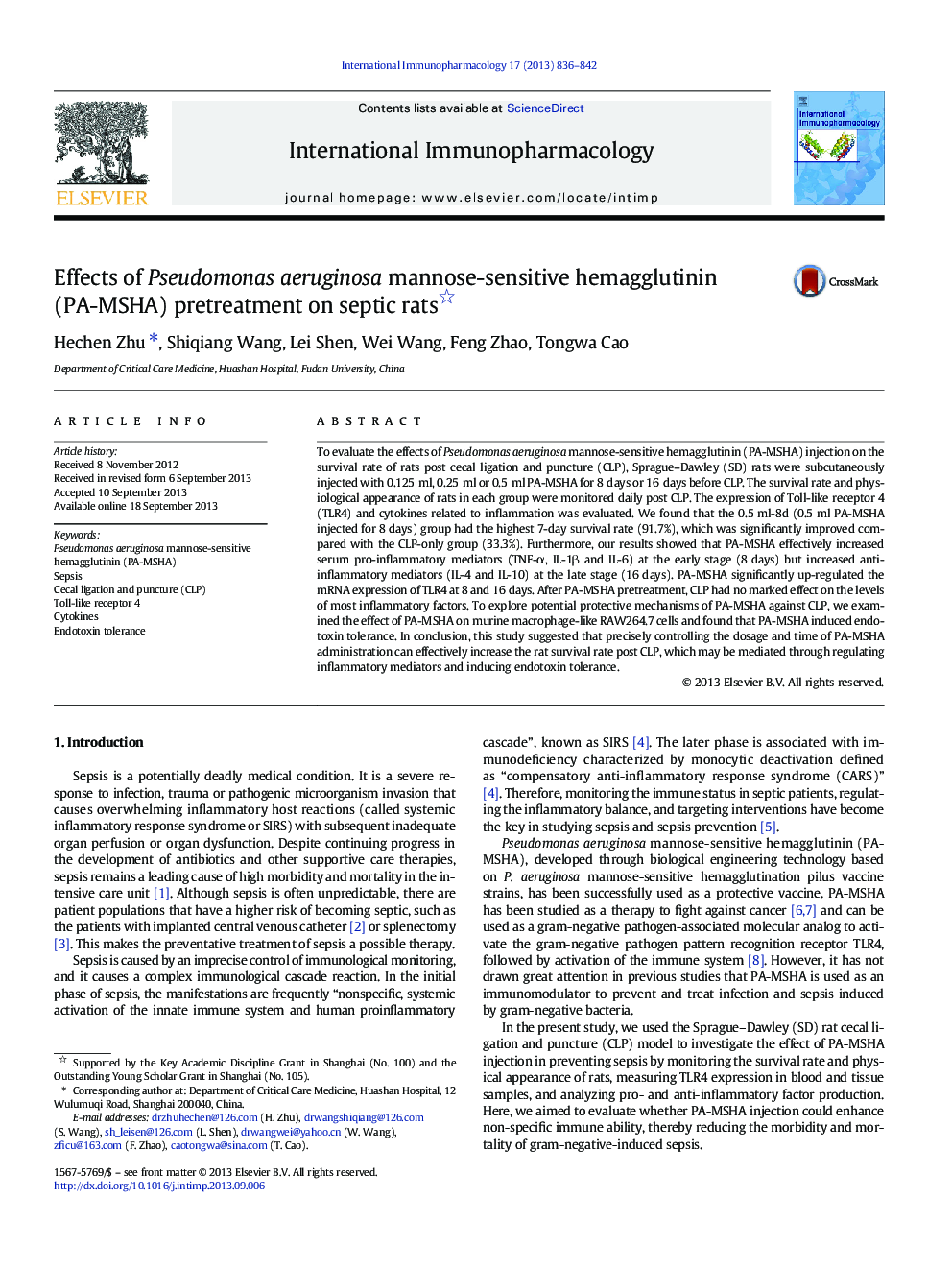| Article ID | Journal | Published Year | Pages | File Type |
|---|---|---|---|---|
| 5833190 | International Immunopharmacology | 2013 | 7 Pages |
â¢The survival rate of rats with CLP was significantly increased after pretreatment with PA-MSHA.â¢PA-MSHA pretreatment caused a change in inflammatory cytokine levels.â¢PA-MSHA up-regulated the expression of toll like receptor 4 (TLR4).â¢PA-MSHA pretreatment could weaken the influences of CLP on inflammatory factors.â¢The results suggest endotoxin tolerance is a possible mechanism of action.
To evaluate the effects of Pseudomonas aeruginosa mannose-sensitive hemagglutinin (PA-MSHA) injection on the survival rate of rats post cecal ligation and puncture (CLP), Sprague-Dawley (SD) rats were subcutaneously injected with 0.125 ml, 0.25 ml or 0.5 ml PA-MSHA for 8 days or 16 days before CLP. The survival rate and physiological appearance of rats in each group were monitored daily post CLP. The expression of Toll-like receptor 4 (TLR4) and cytokines related to inflammation was evaluated. We found that the 0.5 ml-8d (0.5 ml PA-MSHA injected for 8 days) group had the highest 7-day survival rate (91.7%), which was significantly improved compared with the CLP-only group (33.3%). Furthermore, our results showed that PA-MSHA effectively increased serum pro-inflammatory mediators (TNF-α, IL-1β and IL-6) at the early stage (8 days) but increased anti-inflammatory mediators (IL-4 and IL-10) at the late stage (16 days). PA-MSHA significantly up-regulated the mRNA expression of TLR4 at 8 and 16 days. After PA-MSHA pretreatment, CLP had no marked effect on the levels of most inflammatory factors. To explore potential protective mechanisms of PA-MSHA against CLP, we examined the effect of PA-MSHA on murine macrophage-like RAW264.7 cells and found that PA-MSHA induced endotoxin tolerance. In conclusion, this study suggested that precisely controlling the dosage and time of PA-MSHA administration can effectively increase the rat survival rate post CLP, which may be mediated through regulating inflammatory mediators and inducing endotoxin tolerance.
